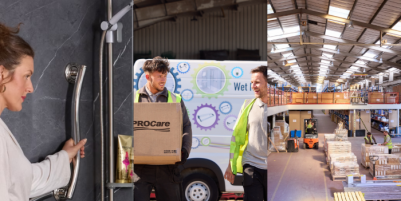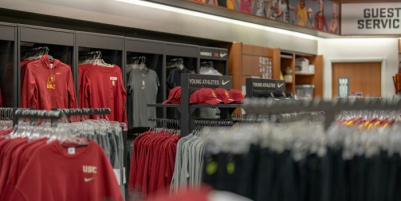-
AI startup Onton raises $7.5M to reinvent the way the world discovers and decides what to buy - November 26, 2025
-
Forklift Market Positions for Recovery as Confidence Expected to Build from 2026 - November 26, 2025
-
PROCare achieves 300% order capacity increase and 99% picking accuracy with Forterro’s ERP solution, Orderwise - November 26, 2025
-
DHL boosts operational efficiency and customer communications with HappyRobot’s AI Agents - November 25, 2025
-
STENA LINE TEAMS UP WITH CAMERA TELEMATICS TO DRIVE SAFETY IMPROVEMENTS AT IRISH SEA PORTS - November 25, 2025
-
Another design award for Toyota’s lithium-ion Traigo_i counterbalanced forklift - November 21, 2025
-
Stuut Technologies Raises $29.5 Million Series A Led by Andreessen Horowitz to Automate Accounts Receivable Work - November 20, 2025
-
INCREASED DIGITAL INVESTMENT REQUIRED TO KEEP PACE WITH 2026 CUSTOMS CHANGES - November 19, 2025
-
FULFILMENT SOLUTIONS FOR SPORTS MERCHANDISE: KEEPING OUR EYE ON THE GAME - November 19, 2025
-
COMPLEX, COSTLY & CONFUSING – THE END OF DE MINIMIS - November 19, 2025
At the start of 2020, Indigo Software outlined 6 key trends that would shape the development of warehouses and the wider supply chain in the coming years. These predictions were published before the arrival of Covid-19, global lockdowns and the continuing economic challenges.
We felt it was time to reflect on our trend predictions and explore whether things have changed. Are our predictions coming true? Has their development been accelerated as a result of Coronavirus? What else is new?
Here are our 6 updated warehouse trends, reflecting the impact of Covid-19 on supply chain operations.
How have Indigo’s 2020 warehouse trends been affected due to Coronavirus?
#1 Dropshipping has increased beyond expectations
Dropshipping has expanded due to the growth of e-commerce and because it allows manufacturers to gain better control of their supply chain and increase profit margins. Now, thanks to the Covid lockdowns, this trend has further increased. Initially suffering from poor stock availability due to factory shutdowns, supply for the vast majority of products has now recovered and dropshipped sales have bounced up way beyond expectations. Looking ahead, direct-to-consumer sales will continue to transform fulfilment operations and warehouses will need to adapt to this form of sales disintermediation. People want their goods faster than ever before and only the most efficient operations will be able to maximise the opportunity on offer.
#2 Consumers have accepted delivery charges
Lockdown shutdowns greatly increased online shoppers in every demographic segment. Once sceptical consumers have become a new breed of avid clickers, welcoming the convenience and safety of having their goods delivered to the doorstep. One of the biggest consumer changes brought about by Coronavirus has been the acceptance of different levels of delivery services and their associated costs. There’s no longer a need to offer free delivery to entice because consumers will buy the goods anyway and pay accordingly. Brands used to have to try and absorb these costs, but Covid has brought about a mindset shift. Shoppers are happy to pay delivery charges. There are two aspects to this change in attitude. Clearly for some there is a need to stay safe at home, but whilst this is important, consumers have also developed a greater appreciation for the work done by essential keyworkers, like warehouse operatives. These people have kept shelves stocked and food on their plates so now, paying a small delivery charge has paled into insignificance.
#3 Reverse logistics is even more complex
Regardless of where the consumer originated – on the web or in social media – with e-commerce sales exploding so quickly, the volume of returns was bound to increase. It means reverse logistics processes are having to operate at a whole new level now. Not only does incoming stock have to be checked and approved as ‘fit for resale’, it also has to be quarantined for safety purposes. The whole process has needed to be rethought and is far more laborious, which has made order accuracy far more important. If returns as a whole have increased in volume, getting orders dispatched correctly in the first place is absolutely critical. When using paper-based picking processes, mistakes are inevitable, especially as order volumes increase. Having a warehouse management system (WMS) will make an immediate difference to ensuring the right goods are shipped at the right time.
#4 Batch pick and sort picking improves accuracy levels
E-commerce suppliers have seen unprecedented levels of activity in their order base and the use of flexible picking methods has increased as a result. Smart operators will have introduced batch pick sort processes to cope with the influx. Not only does this method of picking support an efficient e-commerce warehouse, it also adds in an extra quality check. When picked goods are brought into a central marshalling area, operatives receive immediate confirmation that orders have been picked accurately and items are not missing. This builds quality into a process rather than having to introduce checks at the end, once orders are ready to dispatch and mistakes cost more to rectify.
#5 Technology to keep workers safe
Warehouses have already been through a huge recruitment drive as the lockdown and switch to e-commerce meant many companies have needed to increase their headcount. In addition to finding a steady supply of workers, warehouse managers now also need to keep their workers safe, with social distancing measures in place. A warehouse management system will not only reduce the reliance on human resources and allow a warehouse to do more with fewer staff, it will also help to keep those workers safer, by allowing them to work in specially designated zones.
#6 More investment in a WMS to stay ahead
An efficient warehouse runs on technology and the investment priorities of warehouse executives have turned towards systems that enable improved efficiency, better accuracy and social distancing. Automated WMS systems have become even more attractive for any warehouses that are still running using paper-based systems. It is a foundation technology to secure a business’ future success.
Find Indigo at IntraLogisteX 2020 – on Stand 312
Author
Eric Carter, Solutions Architect, Indigo Software

































